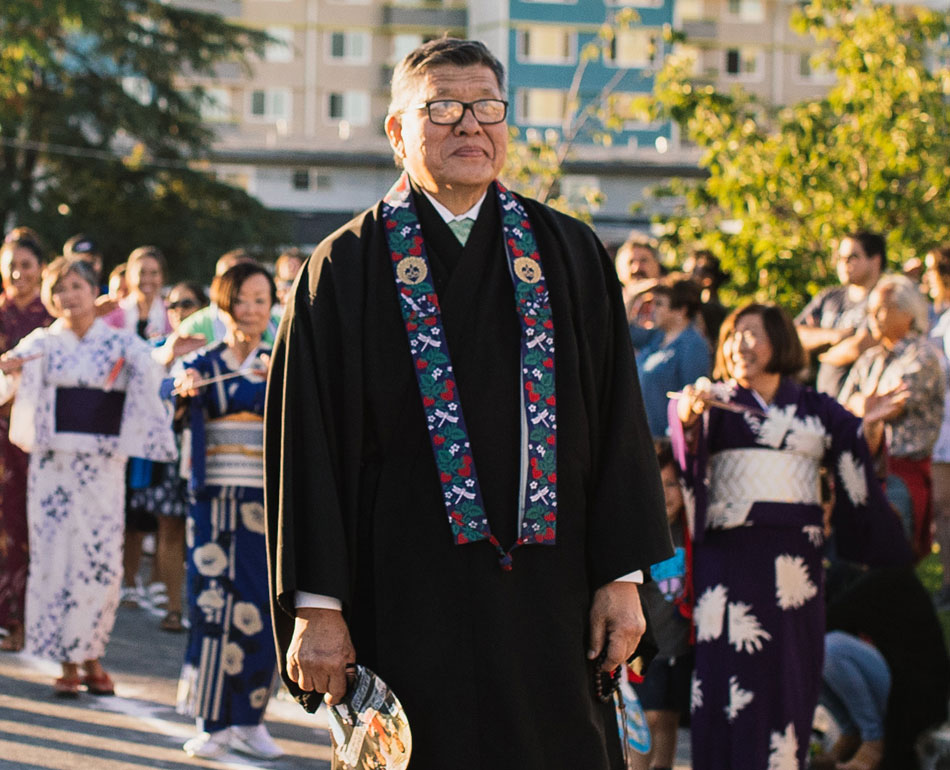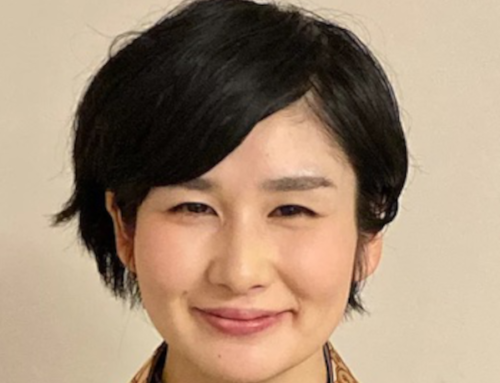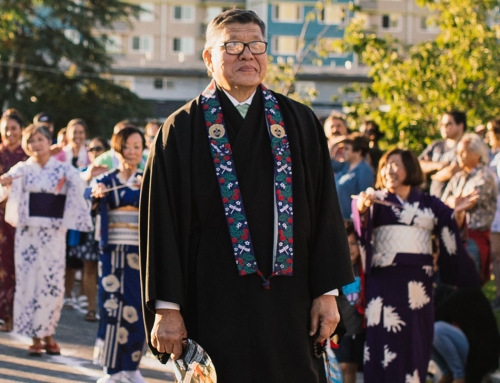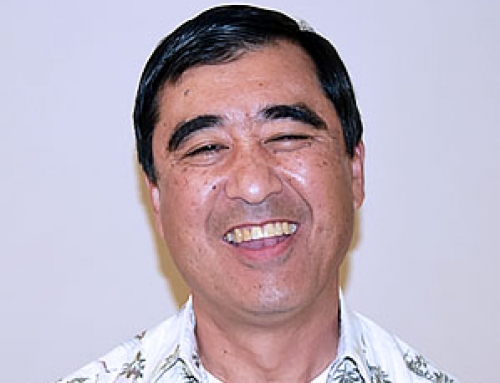Namo Amida Butsu is Amida’s call and an expression of gratitude.
We say the nembutsu probably most often at services where the leader says, “Namo Amida Butsu” and everyone responds “Namo Amida Butsu”. We repeat this three times. This practice of saying the nembutsu in this way may have started as a way to encourage people to recite the nembutsu. As that practice became established the emotional connection to nembutsu became less clear. Where the nembutsu is an expression of gratitude the recitation of nembutsu became a sound to repeat.
Everything we encounter for the first time is something new, unknown. If there is meaning in what we encounter it may take time to discover what that meaning is. Even if the meaning is given to us it may take time to integrate the meaning into our experience. Several years ago I was given the opportunity to throw the first pitch at a San Jose Giants game. Kathy was also offered the same opportunity. It was an exciting chance to be a part of The Great American Pastime. With the kind, patient coaching of Randy Nishijima I managed to throw the pitch in the direction of home plate although the ball did not quite reach the plate. If that was the intent it could have possibly been thought of as a slider.
The experience of throwing a pitch from the pitcher’s mound, although having seen it many times before, was still a new and unfamiliar experience. Even with all the practice and coaching, stepping on to the mound was a totally unexpected experience. The mound is actually a mound. As you make the pitch you fall forward and down. Afterwards I had thoughts of Charlie Brown splayed on the ground. I was almost there, on the ground, without a batter hitting a ball back at me. I have great sympathy for good old Charlie Brown.
Throwing a pitch from the mound was fun. Maybe I’ll have a chance to try again. Throwing a pitch, of course, is not saying the nembutsu. Although, we might say the nembutsu as we throw a pitch. I was coached and patiently taught what the form of throwing the ball should be like. Once in a while the “twack” of the ball hitting the mitt echoed in the back lot. Not often but once in a while the ball seemed to follow my intention. With coaching, practice and time, I felt I could actually throw a pitch.
The intent of the nembutsu is both Amida’s assurance to come as you are and my expression of gratitude that I too am included. It shouldn’t matter whether we say the nembutsu echoing a leader or say the nembutsu continuously. If our intent is to hear and recite the nembutsu of compassion and gratitude then eventually the nembutsu will be a nembutsu of compassion and gratitude. Even if we cannot vocalize or audibly hear the sound, compassion and gratitude can still be there.
The intent of the Buddha is to cause my enlightenment. My response is a life of gratitude.




